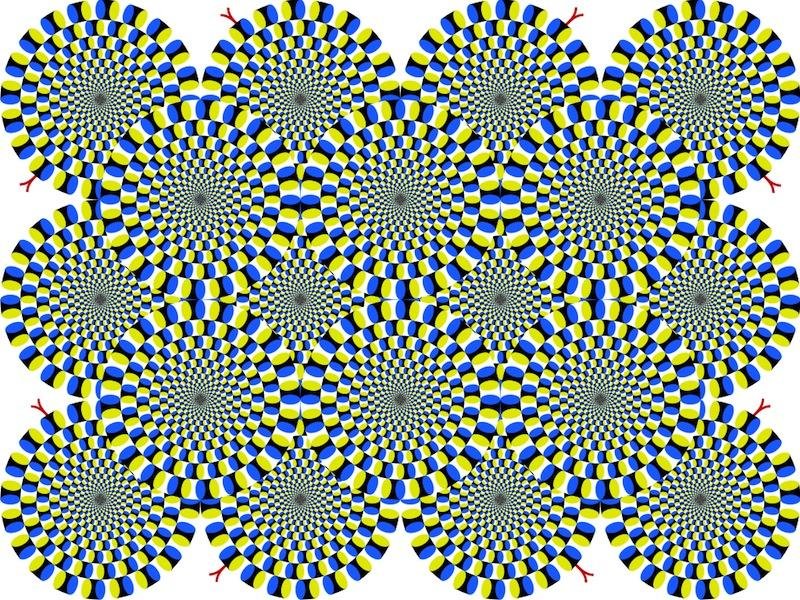MessageToEagle.com – Scientists have long wanted to explain the mystery of how the Rotating Snakes illusion tricks the brain.
Visual illusions demonstrate the ways in which the brain creates a mental representation that differs from the physical world. By studying illusions, we can learn the mechanisms by which the brain constructs our conscious experience of the world.
Now, researchers Jorge Otero-Millan, Stephen Macknik, and Susana Martinez-Conde from the Barrow Neurological Institute share the recent cover of the Journal of Neuroscience in a compelling study into why illusions trick our brains.
The study, led by Martinez-Conde’s laboratory, explores the neural bases of illusory motion in Akiyoshi Kitaoka’s striking visual illusion, known as the “Rotating Snakes.” Kitaoka is a Japanese psychology professor who specializes in visual illusions of geometric shapes and motion illusion
The study shows that tiny eye movements and blinking can make a geometric drawing of “snakes” appear to dance.
Earlier studies of the “Rotating Snakes” indicated the perception of motion was triggered by the eyes moving slowly across the illusion.

But by tracking eye movements in eight volunteers, the vision neuroscientists found a different explanation: fast eye movements called “saccades,” some of which are microscopic and undetectable by the viewer, drive the illusory motion.
The Rotating Snakes illusion, produced as a piece of Op-Art by Akiyoshi Kitaoka in 2003, belongs to the class of “Peripheral Drift” illusions.
These illusions evoke the perception of apparent motion from stationary images viewed in the periphery of the visual field, and the Rotating Snakes illusion is a particularly strong example of its type.
See also:
Amazing Memory – People Who Remember Every Day Of Their Life
Why Hypnosis Does Not Work For Some Of Us – Scientists Explain!
Bizarre Phenomenon Of Sleep Paralysis Causes You To Encounter Demons In Your Dreams
As part of the experiment, participants lifted a button when the snakes seemed to swirl and pressed down the button when the snakes appeared still. Right before the snakes appeared to move, participants tended to produce blinks, saccades and/or microsaccades, and right before the snakes stopped, participants’ eyes tended to remain stable, researchers wrote in their report.
“Studying the mismatch between perception and reality may lead to a deeper understanding of the mind,” says Martinez-Conde.
Optical illusions, sometimes called also visual illusions are images perceived in a manner that differs from objective reality.
What the human eye sees is interpreted by the brain in a way that contradicts physical measurement of the source image.
In one of our articles, Our Universe Is A Gigantic And Wonderfully Detailed Holographic Illusion we discussed that our whole physical world, is – in fact – an illusion being proved by the holographic universe, one of the most remarkable theories of 20th century.
Energy fields are decoded by our brains into a 3D picture, to give the illusion of a physical world.
It seems it remains difficult to decide what is real and not…
© MessageToEagle.com






